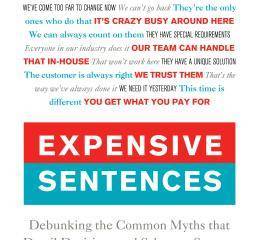Las Vegas top commercial builders got together to discuss the projects, challenges and vision shaping the next chapter of growth.
The CCIM Southern Nevada chapter met last week at The Orleans with a panel that featured Kevin Burke, CEO of the Burke Construction Group; Shawn Danoski, CEO of the DC Building Group; and Chet Opheikens, vice president of R&O Construction.
“Since 2011, the construction industry has been on a tear,” Burke said. “If you look at the U.S. construction volume in 2024, it was $2.2 trillion, $2 trillion in 2023, and $1.8 trillion in 2022. If you go back 10 years, it was $960 million and so it’s been an incredible trajectory, and Las Vegas has been on that same trajectory. But things have changed a bit, today.”
Opheikens said everyone has witnessed a strong demand with multifamily housing since the pandemic. He said neighborhood grocery centers are being planned throughout the valley.
“We haven’t seen that in a while (for grocery centers),” Opheikens said. “Having been a builder of some of the top national retailers in the country, they have been slow since the recession in 2009. I think we will see a pivot moving in the direction, and that’s going to be good for retail.”
Danoski said he’s seeing a lot of movement in restaurants and quick-serve and retail.
“There’s an opportunity to capture lease space for the long term,” Danoski said.
Burke said there’s been a pause for Class A office construction. Industrial continues strong, but he called multifamily “a super-hot market.” Public sector projects are good as are tenant improvements and medical offices.
Danoski said when interest rates come down there will be an influx to Las Vegas that will fill up industrial buildings in 12 months and create a new wave of opportunities.
“Are we overbuilt today by the statistics” Yes, but if there’s cash here you can be ready for the market and be a home run,” Danoski said.
Opheikens said he believes industrial projects have been overbuilt. He agreed with Danoski that it will be absorbed but doesn’t think it will be in 12 months, but hopes it is.
“I’m still seeing demand in the multifamily market, but when you look around town there’s a lot of demand for workforce housing,” Opheikens said. “I see that going very well.”
The panel cited how there continues to be a big wave of that that only creates momentum. Work on the Strip still seems to be active with the A’s coming and hotel remodels means there’s plenty of work available.
The influx of workers and companies, especially from California, to Las Vegas continues to bolster construction, Burke said. They are in the growth business and developers and capital create the opportunities. He cited how the current Trump Administration is securing billions of dollars of foreign investment into the U.S., and if it holds “we can enter a golden age in our business in construction. If you look at the growth that could come from that; and if you look at Nevada being a purple state; (we) can definitely take advantage of that.”
Danoski said it only takes “a little bit of movement to cause that event where we go into super mode.” When that happens remains uncertain, but it only takes two to three large users for the industrial market.
Burke talked about the headwinds facing the construction industry with inflation, high interest rates, land costs, tariffs and labor shortages.
Danoski said if they can shorten a schedule on a project by 10 percent to 20 percent they can reduce the carrying costs and allow them to secure materials sooner.
“For all we work to make up on the front-end with all the multi-agency approvals we have to have at the end, it is taking much longer to close out, and that’s a challenge for us,” Opheikens said. “We’re trying to figure out how to streamline that process to bring all those approvals, permits and inspections at a faster pace. It seems to be expanding as fast as we’re compressing.”
When it comes to dealing with local governments, Opheikens called it a challenge in every aspect. Since the pandemic and changes integrated to be more computerized, it has added to the process and it seems to drag. Site plan reviews, however, that once took a year to 18 months are getting a quicker turnaround.
“It’s made progress since COVID, but it seems there’s a lot of impact out there,” Opheikens said. “We’re trying to hurry and get a project up and going and when you compare us to regional contractors and what we go through in our timeline and what we do in Salt Lake City it’s difficult not to see the disparaging difference. I know if a company is going to come in and put that type of capital into a project, they want that capital moving. They don’t want it sitting there waiting for a bureaucrat to approve one document waiting for another guy to approve another document. It needs to be more streamlined.”
Danoski said the bureaucracies are challenging. These agencies are growing and people are retiring and new people are taking over their positions. Being stuck in that growth mode is creating more roadblocks.
“It used to be that you could buy a piece of dirt and move dirt in six to seven months,” Danoski said. “If there’s no off-site, it’s 12 months. It is not one specific agency but all of the agencies that overlap one another. The gap is between those two that doesn’t fall into anybody’s hands.”
Burke Clark County and North Las Vegas created a self-certification process for tenant improvements so instead of taking eight to 10 weeks they can get through the process in two weeks.
There’s been a big push for the use of artificial intelligence with people taking AI and incorporating it into everything they do, Danoski said. They’re back-checking estimates, downloading documents and quantity take-offs and over the next 12 to 24 months expects it to be an even stronger tool.
Opheikens said they created a steering committee to look at the use of AI. Only about 20 percent of the data programs are successful is what they’ve learned from the industry. They are using a program for their cameras on construction sites and can alert superintendents, for example, if safety protocols aren’t followed by workers.
“When you are managing a really large site and you have a superintendent in meetings, it’s hard for them to be everywhere,” Opheikens said. “For us, the value is safety. We look at that as our No. 1 priority. Having a second set of eyes is a great investment.”
Burke said today there are 77,000 skilled trades workers in Las Vegas, down from 130,000 in the mid-2000s.
While they are getting by today, Danoski said it’s going to be a challenge in the next five years.
Opheikens said they are losing about 1.6 percent of people in skilled trades every year, which is about 1,000 a year. That contrasts to the trade school graduating about 100 students a year.
“We’re out of balance,” Opheikens said. “There is a lot of interest in trade schools, but the challenge is to get into the school and get the training and qualification and no one will hire them until they are 18. There’s a gap and by the time that year goes by they’ve moved off in a different direction.”










